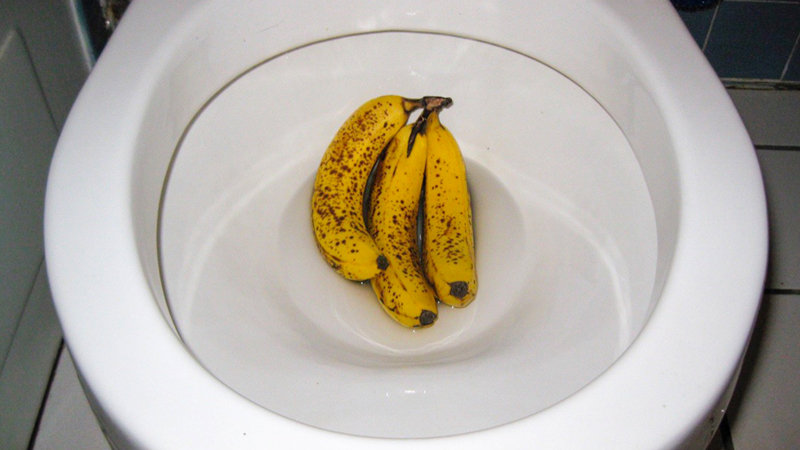Are You Able to Dispose of Food in the Toilet?
Are You Able to Dispose of Food in the Toilet?
Blog Article
Just how do you really feel in regards to Flushing Food Down the Toilet??

Intro
Many individuals are typically confronted with the issue of what to do with food waste, especially when it concerns leftovers or scraps. One typical question that emerges is whether it's okay to purge food down the bathroom. In this post, we'll look into the reasons that people could think about purging food, the repercussions of doing so, and alternative approaches for appropriate disposal.
Reasons that people could think about flushing food
Lack of recognition
Some people may not recognize the potential harm caused by purging food down the bathroom. They might erroneously think that it's a harmless practice.
Ease
Purging food down the toilet may look like a quick and easy remedy to disposing of undesirable scraps, especially when there's no nearby garbage can offered.
Negligence
Sometimes, people might simply choose to flush food out of large idleness, without thinking about the repercussions of their activities.
Repercussions of flushing food down the bathroom
Ecological impact
Food waste that winds up in waterways can add to contamination and harm aquatic ecosystems. In addition, the water used to purge food can strain water sources.
Plumbing problems
Flushing food can bring about clogged up pipes and drains, causing pricey plumbing repairs and inconveniences.
Sorts of food that should not be flushed
Coarse foods
Foods with coarse textures such as celery or corn husks can get tangled in pipelines and cause blockages.
Starchy foods
Starchy foods like pasta and rice can take in water and swell, resulting in obstructions in pipelines.
Oils and fats
Greasy foods like bacon or food preparation oils need to never ever be purged down the toilet as they can solidify and cause obstructions.
Correct disposal methods for food waste
Utilizing a garbage disposal
For homes geared up with waste disposal unit, food scraps can be ground up and flushed with the pipes system. Nonetheless, not all foods appropriate for disposal in this fashion.
Recycling
Certain food product packaging products can be recycled, reducing waste and lessening environmental impact.
Composting
Composting is a green way to throw away food waste. Organic products can be composted and used to enhance dirt for gardening.
The significance of proper waste administration
Minimizing ecological injury
Correct waste management methods, such as composting and recycling, aid lessen pollution and preserve natural deposits for future generations.
Protecting pipes systems
By preventing the practice of flushing food down the commode, homeowners can protect against costly plumbing repairs and preserve the stability of their pipes systems.
Verdict
In conclusion, while it may be alluring to purge food down the commode for convenience, it is essential to comprehend the prospective consequences of this action. By adopting correct waste monitoring methods and disposing of food waste sensibly, people can add to much healthier plumbing systems and a cleaner setting for all.
THINK TWICE BEFORE FLUSHING FOOD DOWN YOUR TOILET IN FALLBROOK CA
Let’s be honest, we’re really supposed to be tossing rotten or leftover food in the compost bin or trash can. But many people like to place scraps of food down the drain of, say, their kitchen sink. That’s why the garbage disposal was invented: so we can continue to place certain foods down the drain without clogging our drain in the process. Smart.
But not all of us have the luxury of having a garbage disposal installed. So, you might continue to shove food down your sink drain anyway – or worse: you might flush them down your toilet! If you’re guilty of doing the latter, you’re going to want to stop, and here’s why:
Toilet Drains Aren’t Designed to Handle Food!
There’s your answer: food just doesn’t belong in your toilet. It may seem like your toilet drain is wider than the drains of your sinks, but truth be told, that isn’t actually the case. The narrower pipes of your toilet leave your plumbing at risk for clogging if you do happen to flush your food. In addition, food doesn’t break down as quickly that toilet paper and human waste do. In turn, this leaves your toilet at risk for a nasty clog.
Although a flush of a tiny pinch of food every now and then isn’t going to completely damage your toilet, there are certain foods that should absolutely not be flushed in your toilet at all. These include starchy foods like mashed potatoes, grains, hard pieces of food that are slow to break down, and fats and oils.
The latter categories of food are particularly problematic as they may harden, expand as they absorb water, break down slowly in your system, or generally create the perfect obstruction with their gelatinous composition. These are all things you don’t want in your plumbing system!
Experiencing a Toilet Clog?
Nobody’s perfect, and we all make mistakes. Sometimes one of the mistakes people make is flushing food down their toilet and later realizing that it wasn’t the best thing to do once they see that their toilet is now clogged. Uh-oh!

I have been very fascinated by Flushing Food Down the Toilet? and I hope you liked the entire page. Make sure you take the time to share this blog entry if you enjoyed it. Many thanks for being here. Don't forget to pay a visit to our website back soon.
Click Here Report this page